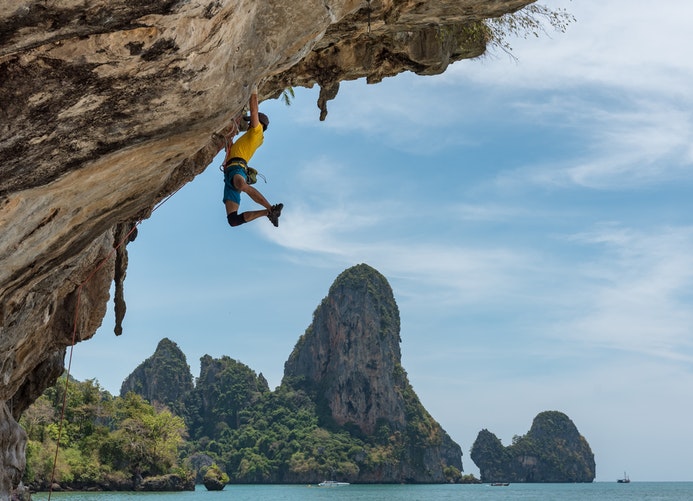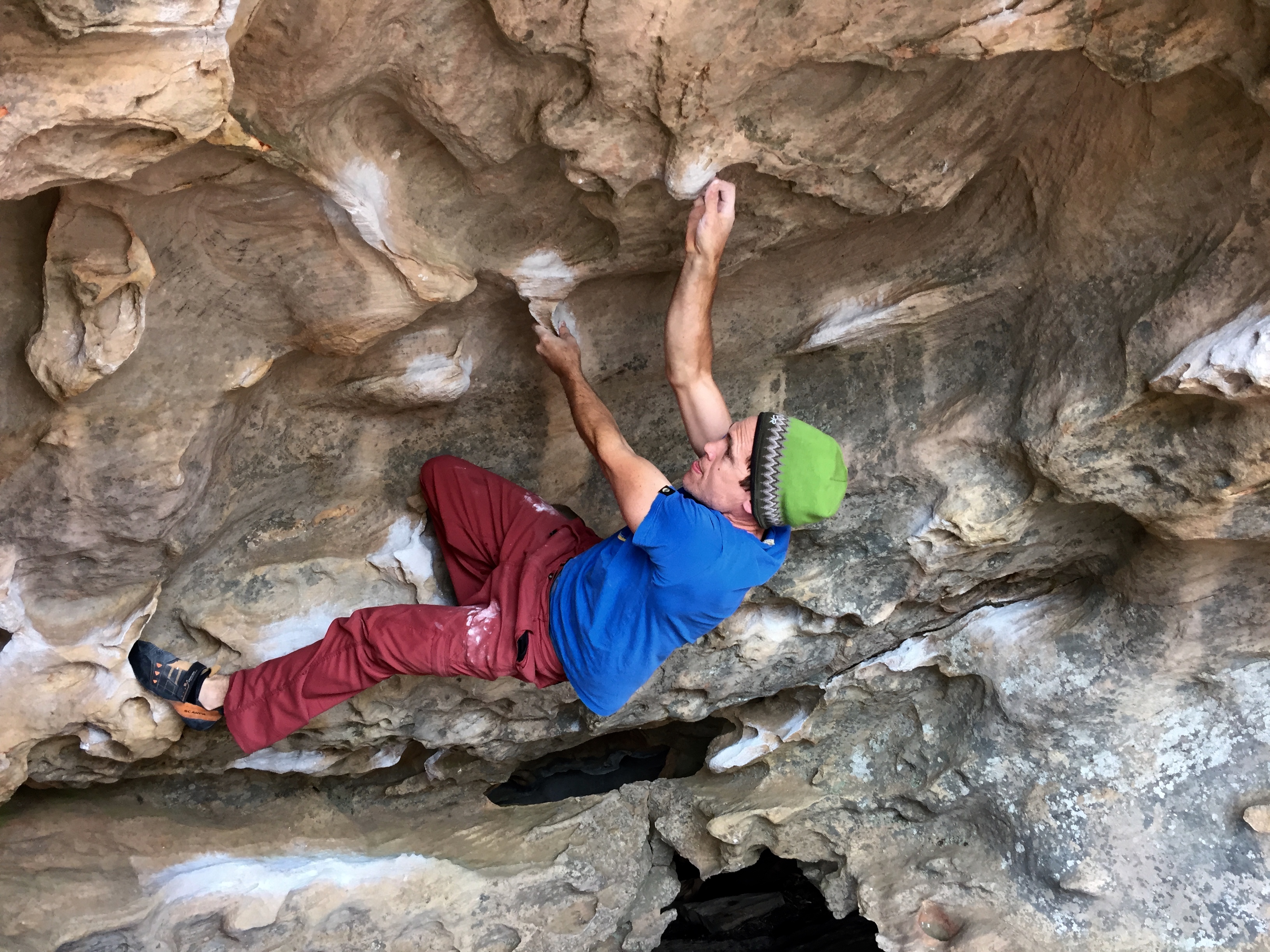If you’re new to climbing, you’re probably wondering what the difference is with bouldering vs rock climbing.
We’re going to break it down as simply as possible first and then dive into the nitty gritty of it all. In a nutshell, bouldering vs rock climbing is the same but different. Bouldering is a form of rock climbing that is done on small formations of rocks or artificial rock walls (aka boulders) without the use of ropes or harnesses. Boulder problems like traverses make the climber go from one end of a wall to another horizontally.
Bouldering requires special climbing shoes to help with your footing and chalk to gain a better grip. Unlike free climbing, bouldering typically means you’ll be working along paths that are less than 20 feet high. Today, this form of climbing has taken such a unique twist. We’re excited to tell you all about it.
Bouldering vs Rock Climbing: Let’s Break it Down
So here’s where the list of differences bouldering vs rock climbing comes into play. There are harnesses and shoes, helmets, rope, security devices, quickdraws, and more. If you’re a little lost right now, don’t sweat it. We’re here to walk you through the details. A climber’s pack can easily weigh anything from around 22-26 pounds. Finding the right spots to go bouldering makes all of the difference in your experience.
Rock Climbing
To understand bouldering vs rock climbing, we are going to take a look at each activity individually. Rock climbing is a sport where athletes scale rock formations and use special equipment for safety and to reach their goal. During this process, you will use tools like ropes, webbing, and cords to prevent from falling. Your goal through the process is to reach the summit of your location.
To make things a little more challenging, you can choose certain kinds of holds or paths that you can only take to get there. For instance, many indoor climbing gyms offer colored or themed routes you can take to the summit. They vary by difficulty and experience level. All in all, rock climbing combines strength training, your endurance, and stamina. If you’re looking to improve your strength, starting out in an indoor gym is your best bet.
Bouldering
With this type of climbing, the participant does not use ropes or safety equipment. Common tools used for bouldering are special climbing shoes and chalk to held your hands get a better grip. As we mentioned earlier, bouldering is different from free climbing, since you have a designated path to take. Similarly to rock climbing, new climbers will want to start out by practicing in an indoor gym first. This way, you will get practice without natural boulders.
When you go bouldering, you will be scaling a rock about 10 to 20 feet high. Remember, the higher you scale, the more likely you are to get injured. Practicing indoors is great because if you fall, you’ll land on a crash pad. The moves are intense and the nervousness is real. Sometimes, bouldering can be as short as navigating just several moves and then you’re done.
The sport of bouldering requires a lot of hooks – toe, heel, and foot. Success is when you finish the route in one leg without falling down on your crash pad. While this form of climbing is shorter than rock climbing, it’s also more tiring. Since you can’t rely on ropes, other equipment, or a belayer, it’s all up to your physical strength and conditioning to get where you want to go.
Bouldering vs Rock Climbing: Style and Technique
When it comes to bouldering vs rock climbing, the movements are pretty similar. Strength, endurance, and strategy are key in both forms. Rock climbers are secured in both a rope and a person watching them, called a belayer. They stop you from falling while you climb. Wherever you go, the goal is always the same. You want to reach the summit – if you can do this in a short amount of time, that is great.
Test your strength and problem-solving skills. It’s easy to get stuck on a route and not know where to find your footing next. A large part of rock climbing is looking ahead to try and figure out a workable path. Think of it as thinking a few moves ahead in a game of chess. Your routes can be anywhere from 40 meters (a single pitch) to 300 meters (multi-pitch) long.
Seasoned climbers can do a 19 pitch in one day. While this might sound daunting, all you need to do is practice and get the right gear. Just remember that reaching the anchor is your ultimate goal. Keep your eyes on the prize.
Injuries and Prevention
Getting injured while practicing or playing a sport is any athlete's greatest fear. When it comes to bouldering vs rock climbing, bouldering definitely comes with a greater risk. Make sure that before you start climbing, you stretch out fully, none of your muscles are tight, and you are perfectly warmed up and ready to go.
Injuries happen through a bad fall, tricky move, or in rock climbing when you untie your knot from the anchor and you’re ready to rappel down. Bouldering seldomly involves rock falls. Most injuries are prevented by using a crash pad and having a spotter. While there are risks involved with just about any sport, you can rest a little easier knowing that rock climbing and bouldering are some of the safest ones. Just use good judgment.
Bouldering vs Rock Climbing Grades
When you’re deciding what difficulty you want to take on, take a look at bouldering vs rock climbing grades. In addition, both forms of climbing offer different scales that can be converted from one form into another. With bouldering, you will use the Hueco and Font Scales. Rock climbing uses the Yomesite Decimal Scale and the French Sport Climbing Scale.
Here’s the Condensed Version: Bouldering vs Rock Climbing
In short, rock climbing is done with ropes and a belayer. Bouldering is done on short routes with crash pads for safety. If you’re new to the world of climbing and want to learn in a safe, easy way, start out at an indoor climbing gym. There are so many options for you to pick up new skills and do it in a way that builds your physical strength and confidence.
Related Article: 7 Best Climbing Shoes For Men And Women








